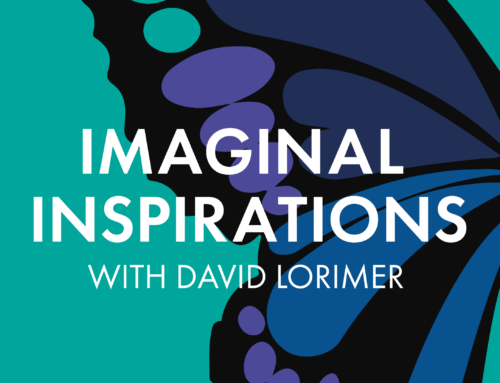Part 2: Life’s unique principles
Abstract
Life sciences today approach nature through a reductionist lens. A broadened methodology, known as Goethean science, complements that one-sided perspective. Building on the elements of the qualitative and the wholeness of organisms, novel examples of non-reductionist work in plant growth, animal, and specifically human organization, are described.
Introduction
This paper is the second in a two-part series introducing modern Goethean science, a non-reductionist approach to studying nature, which complements mainstream science.
In the first paper, the history of Goethean science is briefly surveyed, from the renowned German author Johann Wolfgang von Goethe’s prolific scientific production, to its lapse into obscurity, its re-discovery and explication by Rudolf Steiner, to the contemporary research inspired and informed by that earlier work. The first paper describes how scientists, observing without reductionist preconceptions, arrive at a qualitative understanding of an animal or plant species. It examines the problem of apprehending the holism, or “wholeness” of organisms, a characteristic that is resistant to purely reductionist research and theory.1
This second paper shows how Goethean principles lead to new ways of grasping life’s organizational complexity that complement, not refute, mainstream reductionist approaches. Growth patterns in annual plants are considered. Next, a threefold principle of body-mind organization is described, holistic and qualitative, and positing a continuum of consciousness in the body. The breadth of its applications to biology and integrative medicine is indicated.
Goethean natural science: Life’s unique dynamics
Nowhere do we find repose or completion… If we wish to achieve a living perception of nature, we must strive to keep ourselves as mobile and flexible as the examples she herself provides. Johann Wolfgang von Goethe.2
Throw a ball. Its trajectory in space and time follow the well-defined laws of physics. Imagine a mountain, pushed up by forces of heat deep in the earth, and worn down by wind and water over eons: the same set of laws are at work as in the ball’s motion, only more to compute. But to watch a dandelion’s green leaf rosette appear in the lawn, send up a shoot, open into a yellow flower head made up of dozens of minute florets, and fade to a pale seed-head on a stalk which withers and disappears, is to witness changes in space and over time which speak of an altogether different level of complexity and organization. Anyone who has been awestruck by the growth of an embryo, may consider that an ordinary plant goes through such precisely orchestrated transformations, year in and year out. Unifying principles of physics allow our thinking to penetrate the motion of inanimate objects. Goethe (1749–1832), German author and scientist, proposed unifying principles for dynamism in organic nature.
Goethe was already an acclaimed novelist and playwright in his twenties, when he began studying plants in his own large garden. Ten years later, on a two-year journey from Germany to southern Italy and back, he observed plant life in different environments.3 What drew his attention was growth and change: metamorphosis.4 His-method was to look, not for forces working unseen behind the phenomena, e.g. of chemistry; but for patterns – the explanatory script – in plants’ visibly changing forms. He discovered two principles, “the two great driving forces in all nature” polarity and enhancement.5
Using the annual plant as his model, Goethe described the dynamics of plant growth as a series of alternating polar gestures of contraction and expansion. Each typical annual goes through three contraction-expansions as it grows: from the contracted seed, expanding into leaves; again contracting into sepals, then expanding into a flower; contracting for a third time into stamen and pistils, and finally expanding into the fruit. This is an orderly and complex metamorphosis.6 Furthermore, this metamorphosis can progress or retrogress: we can view a stamen as a contracted petal, or the reverse, a petal as an expanded stamen.7 Goethe’s “foliar theory” is still cited today as the origin of our current understanding that embryonic plant tissue, the meristem, can develop into a stem, leaf, petal, or other plant part – or backwards, a floral meristem reverting to leaf meristem. Furthermore, transitional structures can be found, catching development in the act. Plants can be tremendously flexible, expressing in their forms, ceaseless motion.
Goethe’s second principle is enhancement, meaning rising to a qualitatively higher level.8 We can find enhancement in a plant’s transformations, from the simplicity of green leaves to the emergence of a colorful, diversely-petaled and scented flower corolla; above and beyond this, the duality of stamen and pistils’ forms and their elaborate interactions with insects and birds; and finally the resulting fruit, containing in its seeds the whole plant’s potential in miniature. This is progression from something simpler to something altogether “more,” a qualitative enhancement, a richness, a ripe complexity.
Goethe and the current scientists whose work has been inspired by his ideas, advise that, to fully cognize a plant’s transformation processes, we should picture what we see in sequence: with precise imagination, moving forwards and backwards from one form to the next, like practicing scales in music, to gain proficiency with metamorphic perceiving and thinking. These scientists argue that to adequately grasp a plant’s growth we need to do something, in addition to what we do when we think only logically. It is a practice, whose “effort (is) to achieve direct experience of these transitional movements, or better, moving forms”.9
To some, for a scientist to visualize leaves and flowers might seem like a radical departure. In fact, it is not unusual in current science and medicine, to need to practice in order to perceive something real. Learning to see pathology in cells under the microscope, for example, takes considerable practice and experience – “See those inclusions in that cell?” “Not yet…” – and more experience and feedback to judge what one sees. If you ever accompany someone into the field, an expert in botany, birds or dinosaur tracks, at first one doesn’t even see what the expert is seeing. What variation in that wing? That indentation in the rock is a footprint of an ancient reptile? It can take knowing and practice, to really see.


